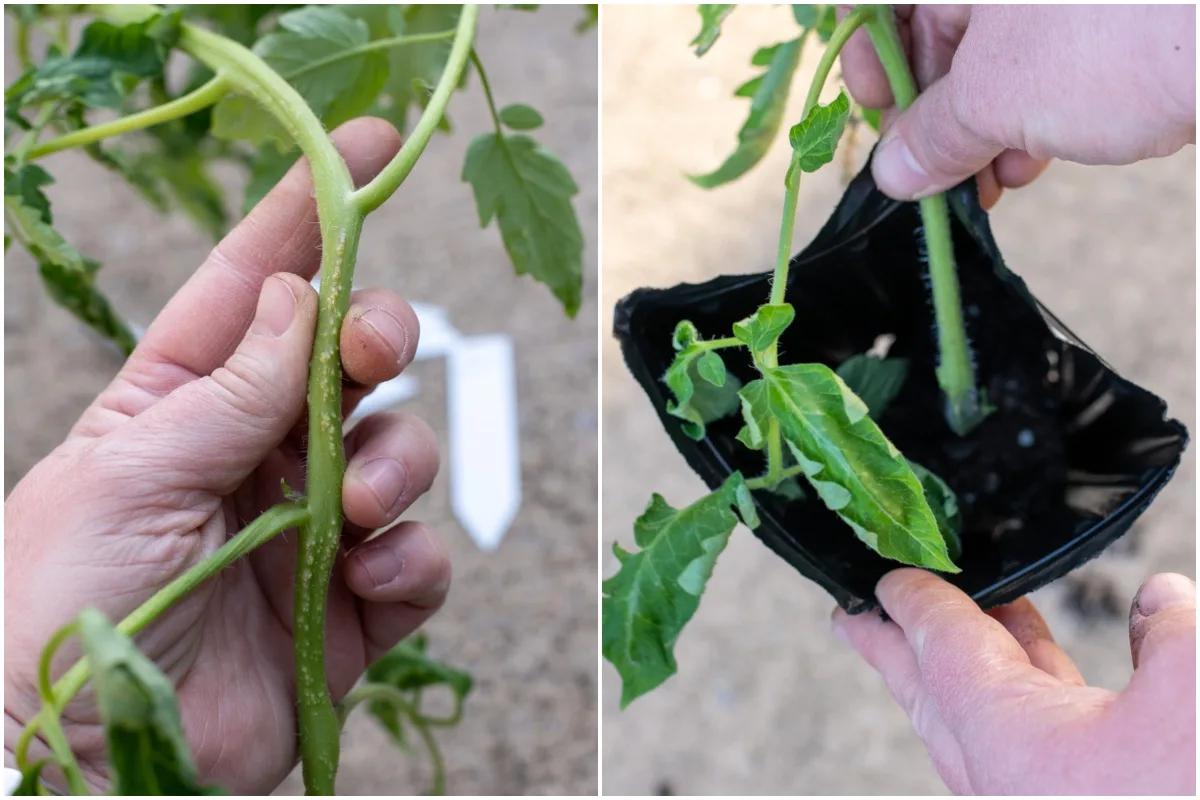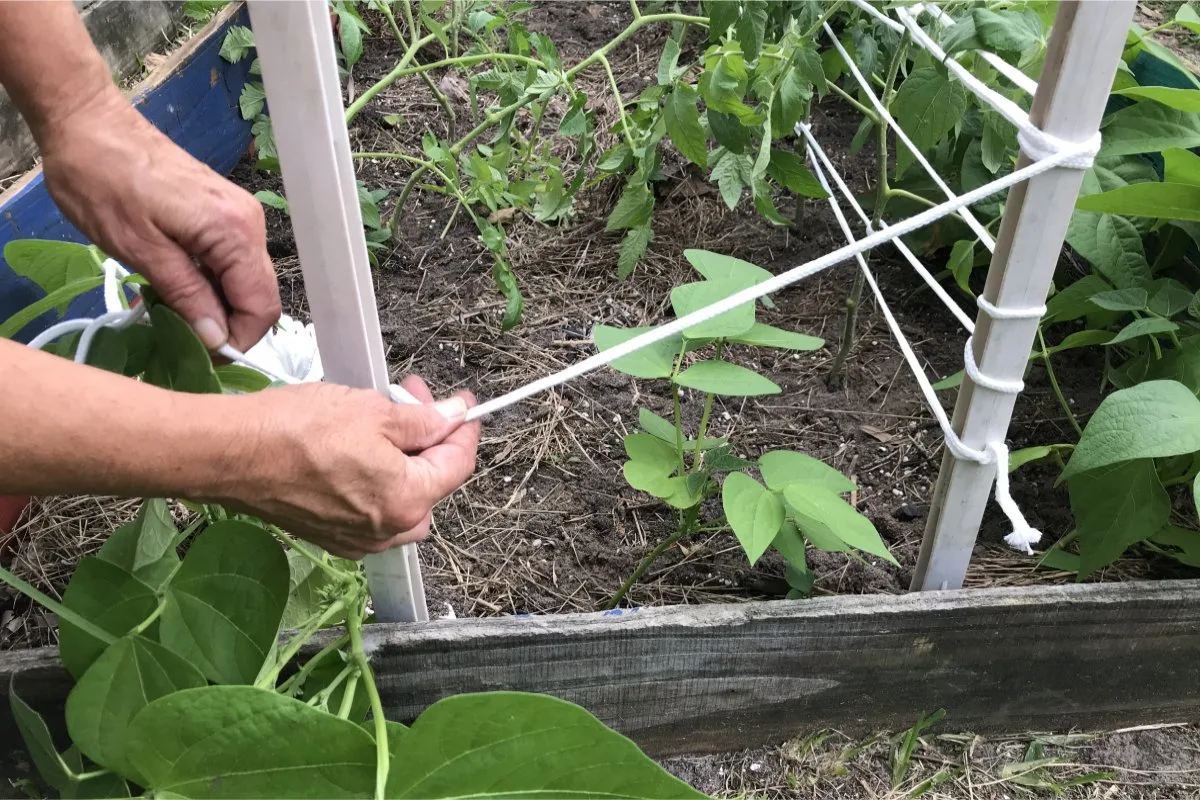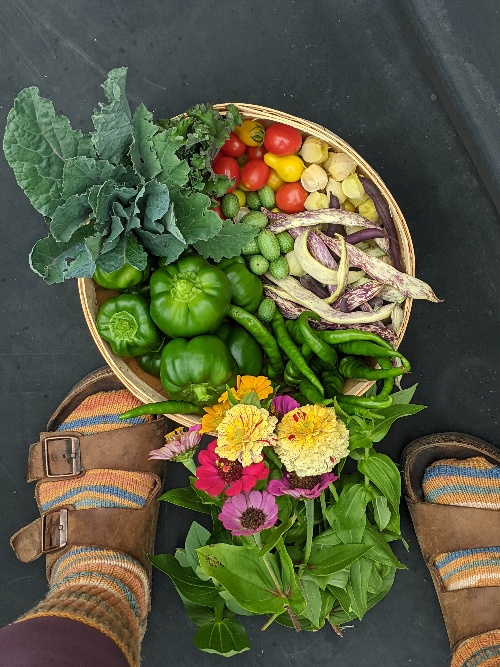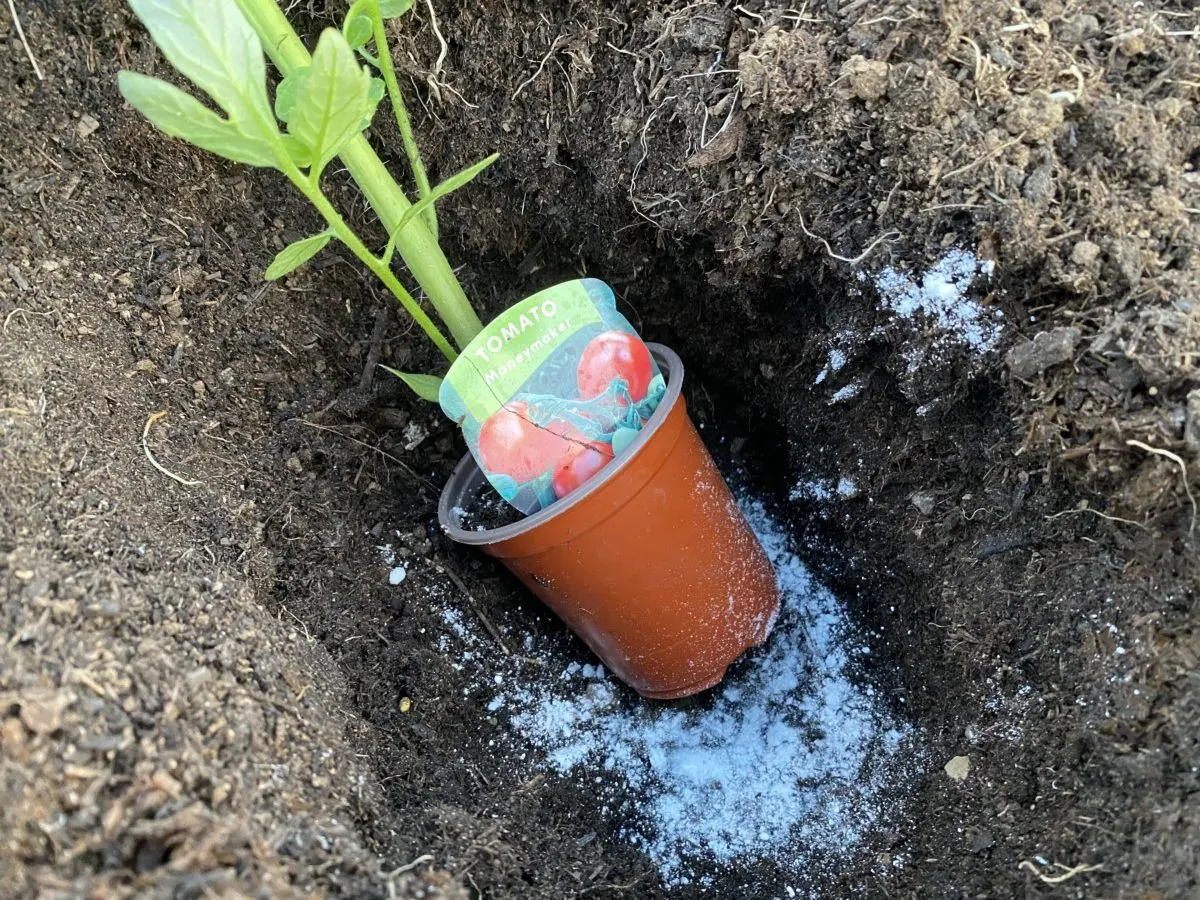
We’ve all heard that an ounce of prevention is worth a pound of cure. The same goes for gardening. Or would it be something along the lines of an ounce of compost is worth a gallon of neem oil? My point is this: if you want to enjoy bushels of tomatoes this summer, you need to do a few things ahead of time.
“Oh, yeah, I was supposed to…”
Over the years, my biggest gardening failures had little to do with invading insects or bad weather. They were almost always a result of my poor planning, which left me with my plants down in the garden.
Oh, I’m not just making a terrible pun here.
I once nearly lost all my tomatoes because I hemmed and hawed, trying to decide how I wanted to stake them that year. By the time I decided on the Florida Weave, my tomatoes had grown well past the point of needing to be staked. Before I could go to the hardware store on the weekend to get the supplies I needed, we had a bad thunderstorm during the week with high winds.
Every single tomato plant snapped at the main stem.
I managed to salvage the plants, but it took them weeks to heal and begin putting out fruit. I had a pitiful tomato harvest, and it was my own fault.
These days, I use the fidgety, late-winter days to get all my ducks in a row so that I have everything I need – plans and supplies – for a successful growing season. Here is what I do to prep for tomatoes.
Order Seeds

I already have tomato seeds.
I do.
I have about a dozen different varieties in my seed-storing boxes. (Yeah, I know, but I’ll be darned if they aren’t the perfect size for seed packets. Plus, they’re air and water-resistant.)
But now is the time to catalog and test the seeds I’m going to grow this year to make sure they’re still good because when it’s time to plant them, I don’t want to wait for new seeds to show up in the mail or worse, have the variety I want be sold out. Cheryl walks you through how to quickly test older seeds here.
Also, I like to grow at least one new tomato variety every year.
By February, I’ve received all of my seed catalogs and narrowed my final choice down to 357 varieties, so it’s time to order!
Beef Up Your Seed Starting Mix

Before you put a single tomato seed in the dirt, consider your seed starting media. Whether you use a commercial seed-starting mix or choose to mix up your own, consider a few add-ins.
Every seed already has all the nutrients it needs to sprout, grow and put out its first true leaves. But beyond that, you’ll need to provide nutrients for strong plants.
This is especially important for seedlings like tomatoes, which won’t be planted outside right away and will spend a considerable amount of time in a pot.
To that end, it’s important to mix in nutrients to your seed starting media.
A few that I like to use are:
- Compost – a gardener’s bread and butter for fantastic plants
- Worm Castings – a no-burn powerhouse with multiple benefits to plants and soil
- Epsom Salts – a good source of magnesium
- Garden-Tone – an excellent organic, slow-release fertilizer
- Blood Meal – a good source of slow-release nitrogen
- Bone Meal – a good source of phosphorus
Remember, go easy. We tend to be heavy-handed when fertilizing, and with seedlings, you can burn the roots if you add too much.
Plan Your Fertilizing Regimen

Speaking of fertilizing, now is the time to plan out your fertilizing regimen for your tomatoes. They need specific nutrients during different stages of growth. For instance, in the beginning, nitrogen is important for healthy stem and leaf growth. As the plant reaches maturity, you’ll want to cut back on nitrogen, as your tomatoes will need nutrients specific to flower and fruit production.
Here’s our guide to fertilizing your tomatoes from seedling until the end of the season.
Plan to Pot Up Using My Secret Method

A few years ago, I got to thinking about the whole burying tomatoes deeply or planting them sideways thing. (You do bury your tomatoes deeply or sideways, don’t you?)
Read Here: Plant Tomatoes Sideways or Bury Deeply – The Secret To Huge Harvests
Anyway, I was looking at the dinky little 3” x 3” seedling pots I always use and wondered if there was a way to give my seedlings a “buried deeply” jump start before I planted them in the garden. Oddly enough, I found the solution to my quandary while growing Beautyberry from cuttings. Here’s what you need, and here’s what to do with it and why it’s so brilliant.
Trust me, once you pot up this way, you won’t go back to old seedling pots.
Choose a Staking Method Before You Need It, and Get Supplies Now

Ahem, I don’t think I need to repeat my Florida Weave fiasco here. Instead, I will leave you with some ideas for staking tomatoes. Don’t forget to buy any materials you will need well before you need them.
Espalier Tomatoes – The Only Way I’ll Ever Grow Tomatoes Again
The Florida Weave: The Easy Trick for Fast, Cheap & Easy Tomato Supports
And if you really want options…
38 Tomato Support Ideas For High Yielding Tomato Plants
Choose What Amendment You’ll Be Adding When You Transplant

Transplanting into the garden is the one time during the entire growing season when you will have direct access to the root zone. What’s happening below the soil is likely more important than what’s happening above it when it comes to your plant’s health.
If you want a healthy and strong plant throughout the growing season, then you need to ensure it gets off to a solid start.
The best way to do that is to add specific nutrients directly in the hole when you plant your tomatoes. That way, the plant has easy access, right at the roots, to whatever food it will need.
Now, I know very few of us are planting our tomatoes outside in February. But it’s best to get everything ready ahead of time. Here, I’ve listed nine different soil amendments that can go directly into the hole to give your tomatoes a boost and feed them all season long. (I never plant tomatoes without 2, 4, 6, & 7. You can order #6 here.)
If you take the time to plan and prepare what you’ll need now, by the time July rolls around, you’ll be up to your eyeballs in beautiful, juicy tomatoes.

Get the famous Rural Sprout newsletter delivered to your inbox.
Including Sunday musings from our editor, Tracey, as well as “What’s Up Wednesday” our roundup of what’s in season and new article updates and alerts.



